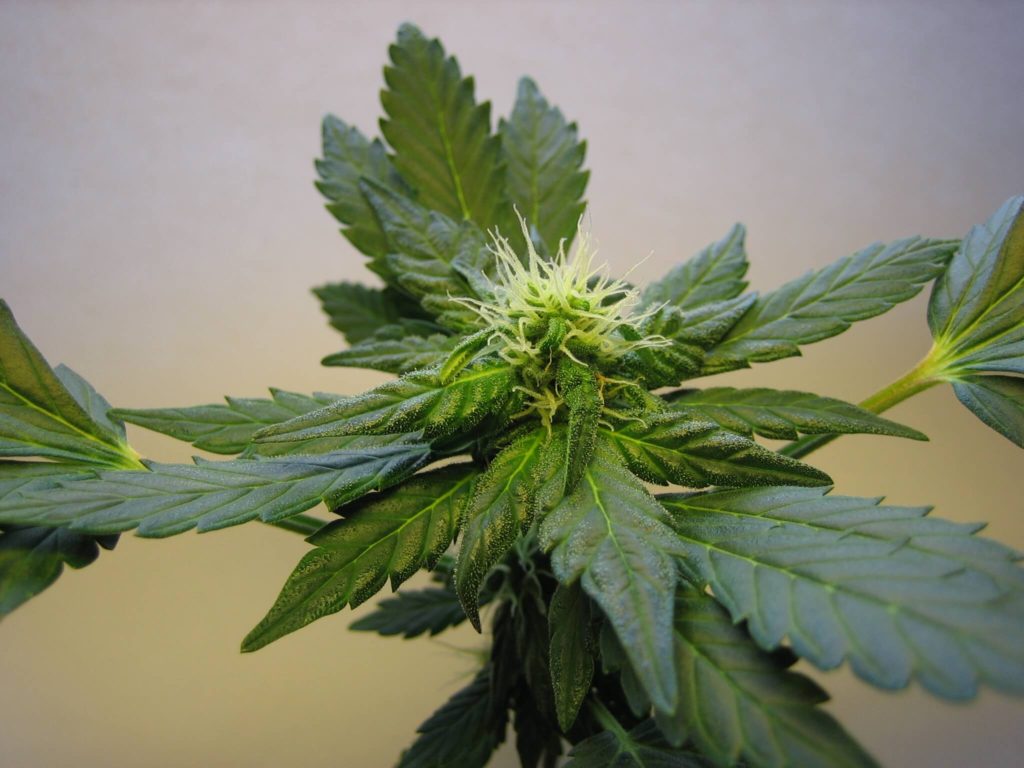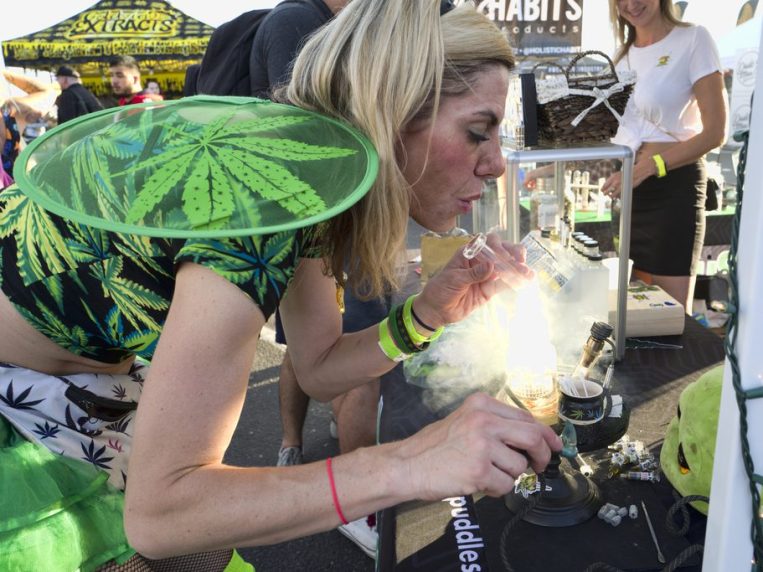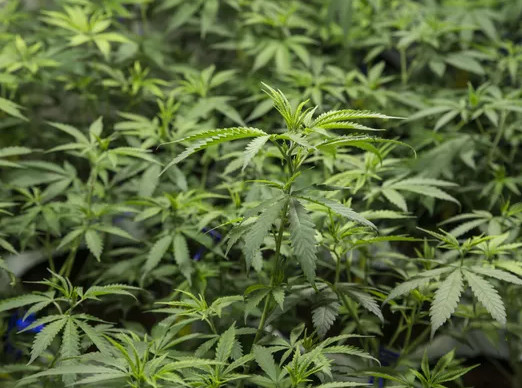The first time I stepped foot on a marijuana farm, I couldn’t see a thing. It was late at night, and it had taken me almost twenty-four hours to get there from Miami, Florida. I had been working on an article about the water rights of marijuana farmers for the past few months, but since most of these farmers aren’t in the habit of discussing their personal matters online or over the phone, I decided to get on a plane to San Francisco and go straight to the source. My destination was in Humboldt County, one of three counties in northern California that make up the “Emerald Triangle,” the agricultural heart and soul of the marijuana industry.
When my eyes adjusted to the darkness, my host, Jack, led me to the cabin where I’d be staying. But the cabin was no ordinary cabin. An adjacent room was filled with oak barrels holding Syrah and Cabernet, and a veranda looked out onto several acres of vineyard. “That’s unusual,” I thought to myself. Touring the farm the next day, Jack showed me his marijuana plants. They were growing vigorously under the California sun, organized in neat rows and labeled with identifying notes. The operation was all very professional, with precise methods for watering, nurturing, and harvesting the plants. Timing was of the essence, Jack told me. Fall out of step with the sun’s rhythms, and a crop’s growth cycle would be disrupted. Though northern California was a hotbed of marijuana cultivation, Jack’s business was thriving because of a meticulous attention to detail. His marijuana fetched prices that reflected a quality product.
Jack is a viticulturist, winemaker, forest manager, and marijuana farmer, among other trades. He is a student of agriculture, having apprenticed with Cuban tobacco farmers, Senegalese goat herders, and French vintners when he was in his early twenties. When his education took him to the Emerald Triangle, he knew he had found his calling. Jack has a knack for growing plants, and perhaps more importantly, for cultivating the human relationships that businesses need to survive. Both are vital traits for a marijuana farmer in these legally ambiguous times.
One of the relationships Jack cultivates is the one he has with me. In addition to being my host, Jack is also my friend—we’ve known each other since before I can remember. Knowing him, I wasn’t surprised to see him engaged in all manner of small-scale agriculture. But when he introduced me to other farmers in the region, the story was much the same; the farmers were passionate about their craft, though in many cases marijuana wasn’t the only crop under cultivation. In addition to grapes, farmers grew and marketed seasonal fruits, vegetables, and flowers. Many raised chickens and honey bees, or stocked fish in nearby ponds. Theirs is a homesteading lifestyle, and the remote, isolated nature of marijuana farming requires a diverse skill set. You don’t have to go far to find skilled carpenters, cooks, or musicians. A laborer might harvest marijuana one week, and guide rafting trips the next. It is an intimate and tight-knit community, where one person can be a friend, a tenant, and an employee all at the same time. These days, the local police are fond of saying that raids are “complaint-driven.” True or not, farming communities seem to believe the mantra, and take every measure to maintain the peace.
Some of the older generation of farmers have been in Humboldt County for decades, and they bring wisdom and institutional memory to the region. Many settled in northern California during the back-to-the-land movement of the 1960s, when progressives fled their city lives in exchange for a more rural, ecologically connected existence. Others came as mining or timber workers, found paradise, and never left. Today many farmers are young and ambitious “ganjapreneurs,” but the ethics of the older generation are still reflected in the community’s reverence for self-reliance and sustainability.
Jack made sure I was introduced to an older couple who had been hosting open-to-anyone “Sunday Waffles” parties every week for over four decades. He was anxious for me to try their fifty-year-old sourdough culture, hoping it would be as delightful a culinary experience for me as it is for him (it was). Other comically wholesome events in the community include Wednesday afternoon barbeques at the fire station, twice-weekly volleyball games, and a community potluck every third Thursday. I attended as many of these gatherings as I could, and as Jack’s guest I was welcomed with open arms. After all was said and done, my first visit to Humboldt County left me with an idyllic image of the modern-day marijuana farming community.
Needless to say, these scenes ran counter to my expectations. My research on marijuana farms to that point had consisted largely of the descriptions contained in news reports of police raids. Typically, those farms were either trespass grows (short-term, large-scale operations on public lands, a method used to reduce one’s exposure and liability) or bare-bones private grows with transient tenants. In both cases, the scene was similar. Land gets cleared, makeshift irrigation schemes suck water from nearby streams, trash and propane canisters are strewn about haphazardly, and all types of fertilizers and pesticides are used to maximize yields as quickly as possible.
The marijuana farmers I met painted a decidedly different picture. Theirs is a farming community in tune with itself, the land, and the industry it wants to be a part of. Farmers owned their own land, took care of a familiar crew of workers, and complied with local regulations (to the extent there are any). The marijuana farmers I met were engaged in the kind of local, sustainable, high-quality, small-scale agriculture that the modern food movement likes to put on a pedestal. Cultivating marijuana had revitalized the idea of the American family farm.
At least in this remote corner of the country it had. Elsewhere, the prospects for marijuana agriculture were less rosy. Colorado’s nascent marijuana industry—state-legal since 2012—was struggling to navigate a farming culture that assumed cultivation should take place indoors, in large warehouses, where conditions can be controlled but energy costs are sky-high. In Ohio, marijuana legalization advocates were forced to lobby against a legalization initiative in 2015. The measure would have granted exclusive farming rights to a select few well-connected companies. Not surprisingly, the proposed oligopoly didn’t sit well with the majority of Ohio voters.
Lately, though, the doom and gloom has taken on a big-picture perspective. The prospect of widespread (and perhaps someday federal) legalization has given rise to a fear that corporations will take over the marijuana industry. According to this narrative, a few large farms will flood the market with cheap, generic marijuana, running small-scale farmers out of business. Marijuana will become an agricultural commodity, and the free market will eventually lead to market consolidation. I like to call this the Big Marijuana prophecy, and you don’t have to look very far to find it.
In May 2013, only six months after Washington State legalized recreational marijuana, a tech entrepreneur named Jamen Shively held a press conference in Seattle. The room was buzzing with reporters, cameras, and jostling entrepreneurs. They had all come to hear what Shively had promised would be a game-changing announcement. “We are Big Marijuana,” he said. “We are moving forward with plans to build a national and eventually international network of cannabis businesses. We are going to mint more millionaires than Microsoft.” Shively was accompanied by Vicente Fox, the former president of Mexico. Fox touted the plan’s potential to end the war on drugs, and the message coming out of the event—The Era of Big Marijuana Is upon Us— made an easy headline for media outlets around the country.
Shively was educated at Berkeley and MIT, but his background doesn’t reveal any meaningful experience with the marijuana industry—before a stint with Microsoft, Shively worked with tech start-ups, cement companies, and cybercafés. His plan didn’t appear to be on solid legal ground, either. Licensing a global network of marijuana businesses would run afoul of national and international drug laws, a detail Shively hadn’t yet accounted for. “I don’t know how exactly that would be done, but I know it’s been done in other industries,” he offered. Before long, his business would run into one stumbling block after another. Nonetheless, some wondered if Shively would become the “Bill Gates of Weed.” Despite the questionable merits of his proposal, Shively became a media sensation, and investors followed. It seemed he had tapped into a growing public sentiment that, sooner or later, the counterculture marijuana industry would be taken over by corporate interests.
Shively was by no means the only one to feed into the Big Marijuana prophecy. The CEO of another high-profile marijuana firm echoed the familiar rhetoric: “We see the inevitability of large, well-run companies to sell cannabis. That train left the station a long time ago.” Derek Peterson, CEO of Terra Tech, a marijuana supply company, echoed those thoughts: “We’re a mass-produced society, from the food we eat to the television we watch. Ultimately, big alcohol or big tobacco is going to come into this space. I just can’t imagine that won’t happen.”
It’s not surprising that marijuana entrepreneurs are peddling the Big Marijuana narrative. After all, they need investors to buy into the hype. But even neutral observers see the rise of Big Marijuana as likely, if foreboding. In a 2014 study, researchers from the University of California, San Francisco, poured through decades of previously confidential internal communications of tobacco company strategists and executives. They found evidence that, as far back as the 1970s, tobacco companies were looking into marijuana as a potential or rival product. A few corporate documents were all they needed to see to conclude that “legalizing marijuana opens the market to major corporations, including tobacco companies, which have the financial resources, product design technology…, marketing muscle, and political clout to transform the marijuana market.”6 As a result, the authors urged regulators to prevent big companies from taking over the marijuana market and causing a “public health epidemic.”
Meanwhile, in the traditional marijuana farming regions of northern California, the fear of a Big Marijuana takeover is palpable. In 2010, California voters decisively rejected Proposition 19, a measure that would have legalized recreational marijuana and commercial cultivation. The usual arguments against legalization were made by skeptics who were concerned about marijuana’s impact on public health and safety. What came as a surprise to many, however, was an apparent lack of support for legalization from the Emerald Triangle, where local economies are dominated by, and dependent on, marijuana cultivation. Voters there were less enthusiastic about marijuana legalization than the state as a whole. In Trinity County, one of the three counties that make up the Emerald Triangle (besides Humboldt, the other is Mendocino), the measure barely received 40 percent support.
The simple narrative that emerged to explain the Emerald Triangle vote was that marijuana farmers were being driven by greed. The price of marijuana, after all, is inflated on the black market, and having been successful operating in the shadows for so long, these farmers were perfectly happy to maintain the prohibition status quo. The narrative was misleading but not altogether unfounded. Many opponents of legalization voiced concerns that Proposition 19 was vague and would prove difficult to enforce. Marijuana farmers also feared that the law’s ambiguous language would allow Big Marijuana conglomerates to flourish. They sensed that an unregulated environment—or a regulated environment stacked against them—might create more problems than it solved. If marijuana agriculture was left unchecked, large-scale producers would threaten to drive out California’s small-scale marijuana farms.
Marijuana agriculture is now a major economic force in states like California and Oregon, and politicians have taken notice of the Big Marijuana prophecy. Gavin Newsom—California’s governor-elect—is a marijuana legalization advocate. He chaired the state’s Blue Ribbon Commission on Marijuana Policy, hoping to prepare California for the end of prohibition. Newsom recognizes the Big Marijuana threat. “Legalization should not be about replacing one cartel with another,” he said.
In states without a track record of marijuana cultivation, some politicians have used the Big Marijuana prophecy to lobby against legalization in the first place. The Massachusetts governor and attorney general, joined by Boston’s mayor, came out against marijuana legalization in 2016. They felt the state was unprepared to reckon with big businesses taking over the industry, and expressed skepticism that Big Marijuana would control the market responsibly. “Motivated by the profit potential of dominating a new marketplace, proponents know it’s not in their best interest,” they wrote in a Boston Globe op-ed. They might well be right.
One thing is clear: if the Big Marijuana prophecy comes true, there won’t be a shortage of likely culprits. Big Tobacco and Big Alcohol know how to produce and sell inhalants and intoxicants. Big Agriculture cultivates prodigious quantities of agricultural commodities. Big Pharmaceuticals can realize the medical and commercial potential of psychoactive drugs. And Wall Street and Silicon Valley bring investors and disruptive technologies.
Marijuana is a versatile and multidimensional plant, capable of being grown, processed, and consumed in many different ways. These traits are what make marijuana such a fascinating plant, with untold potential for new varieties or applications. But marijuana’s versatility also presents a business opportunity for the big industries, each of which may be capable of a wholesale takeover of the marijuana industry. In part, Big Marijuana may seem like an inevitable destination because there are so many roads that can take us there.
But that doesn’t mean other destinations don’t exist. The legal marijuana industry is brand-new, and policymakers are scrambling to write the rules. Now is the time to think about what those rules should look like. So far, most of the rules are focused on how marijuana is sold and consumed. That makes sense, of course, since public health concerns were a primary reason marijuana was prohibited in the first place. But many other steps have to be taken before marijuana can be sold or consumed, and it all starts at the beginning of the supply chain, where farmers plant, care for, and harvest marijuana.
The agricultural sector of the marijuana industry has received far less regulatory attention. States know they have to consider how (and by whom) marijuana can be sold, as well as where (and by whom) it can be consumed. And, naturally, politicians are all too happy to devote themselves to the study of marijuana taxation. Marijuana agriculture, on the other hand, is more easily ignored or misunderstood. New York’s medical marijuana law refers to the process of growing marijuana plants as “manufacturing.” The law doesn’t say much about the “manufacturing” process, other than a requirement that plants be grown indoors. That is a curious (if not uncommon) mandate for a plant that has enjoyed success being grown outdoors for thousands of years.
After Colorado voters legalized recreational marijuana use in 2012, the state created a task force to propose rules and regulations for marijuana. The recommendations the task force came up with identified some agricultural issues (such as the need to tax farmers), but the more fundamental questions facing marijuana farmers (including how marijuana can be grown) went unanswered. California is no stranger to this phenomenon. Despite legalizing medical marijuana in 1996—further fueling the state’s already robust marijuana farming industry—lawmakers completely neglected the subject of marijuana agriculture for twenty years. The state acted as if marijuana appeared out of thin air.
In this policy vacuum, the Big Marijuana prophecy is thriving. Despite acknowledging that no big alcohol or tobacco firms had shown an interest in the marijuana industry, the Economist’s cover story on marijuana on February 13, 2016, claimed that “big companies are likely to emerge,” with “big farms supplying a national market.” Chris Walsh, the editor of the Marijuana Business Daily, feels tension in the air: “I think there’s a ton of paranoia that they’re buying up warehouses and signing secret deals.”
There’s no question that entrepreneurs are lining up to capitalize on the bonanza of marijuana legalization. By some measures, marijuana was already the country’s most lucrative cash crop even before serious legalization efforts began. Surely there is money to be made in cultivating marijuana, and there are people willing to cultivate it. But is Big Marijuana inevitable? Is it beyond doubt that a few big farms will supply a national market with cheap, generic marijuana? If it isn’t, what will marijuana agriculture look like? Or perhaps the better question is, what should marijuana agriculture look like?
With states across the country legalizing marijuana, the prohibition era is drawing to a close. The 2016 election season may have been divisive and hotly contested, but marijuana legalization initiatives scored resounding victories across the country. There are now twenty-nine states that have legalized marijuana in some form. These states are now facing an unprecedented challenge.
A billion-dollar industry is transitioning out of the black market and into our everyday lives. And yet, because the legalization movement is pushing forward on the strength of ballot initiatives and voters’ demands, lawmakers are largely unprepared for the messy task of figuring out what comes next. That’s not to say the legalization debate is not worth having anymore. It is, and each state will have to confront legalization eventually. But with most states warming to the idea of marijuana legalization, now is the time to find answers to the most pressing questions facing the industry.
Jonathan Caulkins, a professor at Carnegie Melon University, is not afraid to point out the consequences of failure: “We are going, in the United States, to legalize marijuana nationally … and there’s a good chance that people in 25 to 40 years will look back and shake their heads and ask, ‘What were you thinking? Why did you think it was a good idea to create an industry of titans?’”
Now is the time to think about what marijuana agriculture should look like. Now is the time to ensure that the marijuana farm of the future is the type of farm Americans want it to be
Credit: www.salon.com













